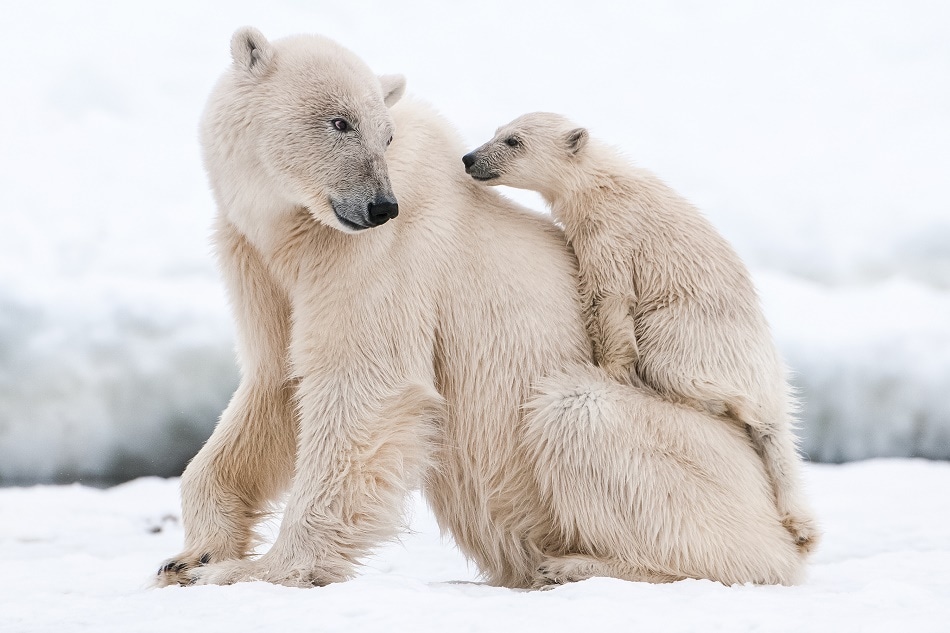
Image credit: hlopex / Shutterstock.com
Throughout the ongoing discourse regarding climate change and the climate crisis it is agreed that the arctic is the region on Earth most at risk and currently feeling the immediate effects of climate change.
Warming temperatures and extreme weather events are having an adverse effect on the landscape, which in turn is causing a breakdown in the ecosystem as the reproductive activity of arctic species is on the wane.
It is not uncommon for researchers to record a downturn in the reproductive activity of one or two species, but the latest study suggests that a greater number of animals and plants are finding it difficult to maintain or expand reproductive numbers. “One non-breeding year is hardly that bad for high-arctic species,” says Niels Martin Schmidt of Aarhus University, Denmark, and lead author of the study.
The paper, recently published in the PLOS Biology journal, reveals that only a few animals and plants were able to reproduce due to the “abundant and late-melting snow.” During 2018, increased snowfall occurred across a vast area of the Arctic landscape and up to 45% of the Arctic area remained fully covered until late July.
The worrying perspective is that 2018 may offer a peep into the future, where increased climatic variability may push the arctic species to – and potentially beyond – their limits.
Niels Martin Schmidt, Aarhus University, Denmark, and lead author of the study
The Arctic harbors a diverse and unique group of organisms and species that have adapted over the course of time to the harsh conditions of the region. Yet, due to the acceleration of climate change which includes rising temperatures and extreme weather events, the ecosystem cannot adapt at the same rate. This is what the researchers believe is causing the adverse impact on the Arctic’s ecosystem.
“Our study shows that climate change is more than ‘just’ warming, and that ecosystems may be hard hit by currently still rare but extreme events. What it also brings out is the unparalleled value of long-term observations of the Arctic. Only by keeping an eye on full arctic ecosystems can we understand the havoc brought by the changing climate.”
Leaders of nearby Nordic countries are particularly concerned as they witness the close proximity of the crisis and fear the wider ramifications and continuation of such events. This has led to Nordic governments signing declarations committing to reaching carbon-neutrality across the five Nordic states. The hope is that this will also put pressure on other leaders to take action in accordance with the Paris Agreement.
In addition to the Nordic states initiative, civil protests led by Extinction Rebellion and instigated by Greta Thunberg’s School Strike for Climate, are also pressuring world leaders to take immediate action. This is to prevent us reaching a global tipping point, or an event whereby the environmental ecosystem of the entire planet is flipped into a state of catastrophe.
Back in 2015, the World Economic Forum published the Arctic Investment Protocol which sets out an agenda and series of guidelines to promote sustainable economic growth whilst building resilient, inclusive, and environmentally sound investments.
However, this protocol requires more of a concerted international effort in the here and now in order to tame the current rate decline of animal and plant numbers and prevent further decimation in the region.
Continuous monitoring of the arctic ecosystems is thus a prerequisite for our ability to actually characterize rare or extreme events and for understanding the likely ecological consequences of such events in a future arctic climate.
Niels Martin Schmidt
Therefore, a total collapse of the Arctic ecosystem is not only damning for the region and surrounding states, but it would cause severe, destabilizing consequences across the planet.
Later this year the COP25 climate change conference takes place in Chile. Their mission statement reads, “The COP must encourage concrete climate action, ensuring an inclusive process for all parties and the formal integration of the scientific world and private sector.”
With climate change being a reality now and the declared climate emergency also being a political and industrial emergency action must be taken to preserve both the future of humanity by ensuring the stability of ecosystems across the globe. Thus, the reproductive collapse in wildlife and ecosystems in the Arctic should be marked as high on the COP25 agenda.
Disclaimer: The views expressed here are those of the author expressed in their private capacity and do not necessarily represent the views of AZoM.com Limited T/A AZoNetwork the owner and operator of this website. This disclaimer forms part of the Terms and conditions of use of this website.